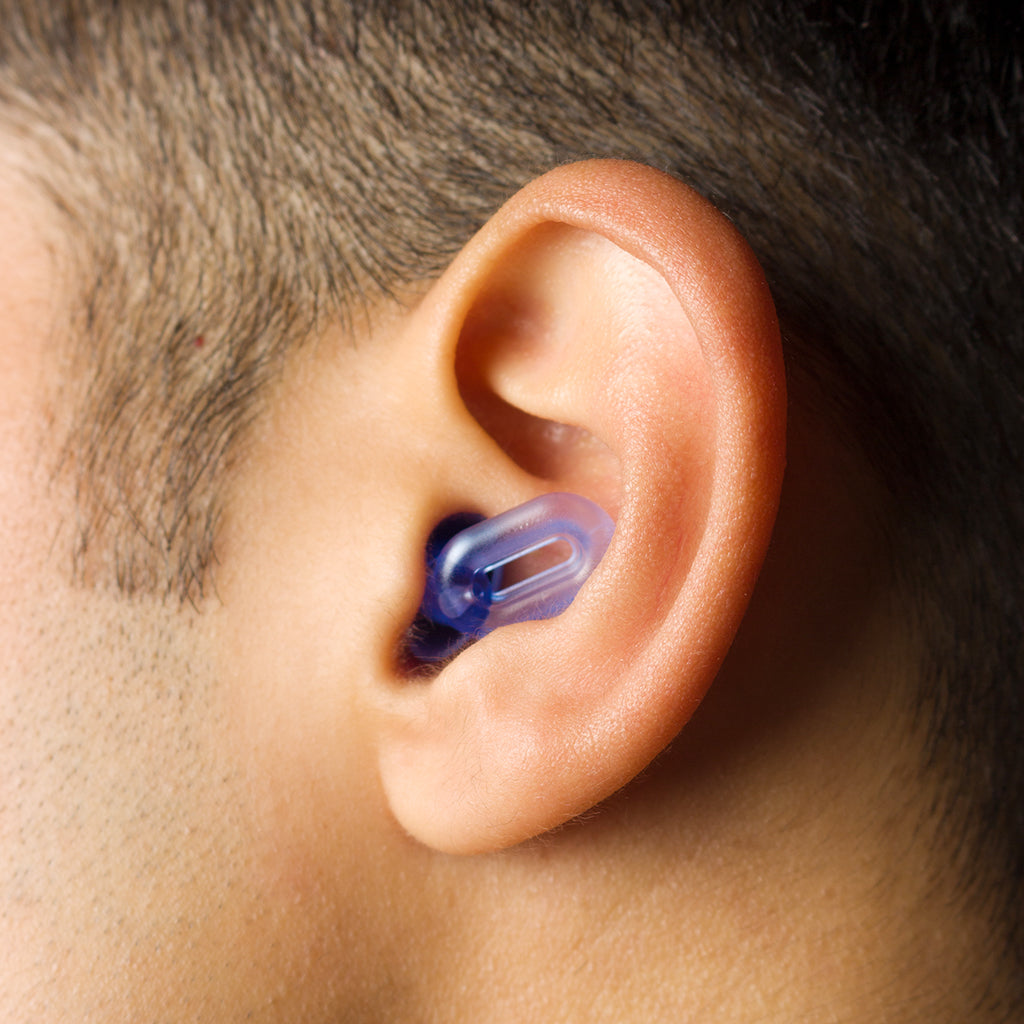
Redefining Passive Noise Reduction Technology: Multi-layer Microperforated Noise-Reducing Earplugs
Share
Saccater Moment Earplugs: How Microperforated Technology Works
The Saccater Moment Earplugs use a dual-cavity microperforated structure to reduce high-frequency noise while preserving speech clarity. This design is rooted in decades of acoustic research and validated by third-party laboratory testing.
Structure of the Moment Earplugs
1. Top Layer (First Cavity):
- Entrance Hole: A 1mm diameter hole at the top of the earplug.
- Cavity Depth: The hole leads to a 12mm-long cavity before reaching the 600-mesh polyester membrane.
- Function: This cavity acts as a Helmholtz resonator, attenuating high-frequency sound waves before they reach the membrane.
2. Middle Layer (Membrane):
- 600-Mesh Polyester Membrane: Located at the bottom of the first cavity, with 5-micron perforations and a 1.5% perforation ratio.
- Function: The membrane further attenuates sound waves through viscous friction and Helmholtz resonance.
3. Bottom Layer (Second Cavity):
- Cavity Depth: The space between the membrane and the eardrum, sealed by the earplug, forms a second cavity.
- Function: This cavity enhances the attenuation of specific frequencies through standing wave effects and impedance matching.

Key Technology Explained
1. Dual-Cavity Architecture
- First Cavity (12mm depth): Acts as a Helmholtz resonator, tuned to attenuate frequencies around 2800Hz.
- Second Cavity (sealed ear canal): Enhances ultra-high frequency reduction via quarter-wavelength resonance.
2. 600-Mesh Polyester Membrane
The core filter with 5μm microperforations uses frequency-dependent acoustic impedance to target high frequencies. Key formula:
Where \( x = d \sqrt{\frac{\omega \rho}{4 \eta}} \).
Experimental Validation: Dual-Cavity Performance
The performance of the Moment Earplugs has been rigorously tested by Michael & Associates, Inc., a laboratory accredited by the National Institute of Standards and Technology (NIST). The test results show significant noise reduction above 1000Hz, consistent with the theoretical predictions of the dual-cavity design (see table below).
| Frequency (Hz) | Avg. Noise Reduction (dB) | Theoretical Prediction (dB) |
|---|---|---|
| 125 | 14 | 11.2 |
| 250 | 15.5 | 13.5 |
| 500 | 14.6 | 12.8 |
| 1000 | 20.3 | 19.5 |
| 2000 | 25.2 | 27.2 |
| 3150 | 25.9 | 26.4 |
| 4000 | 23 | 25.8 |
| 6300 | 22.1 | 24.2 |
| 8000 | 23.8 | 26.5 |

Why It Works
- High-frequency sound waves (>1000Hz) are attenuated by viscous friction and impedance mismatch in the microperforations. Higher frequency → Faster vibrations → Increased viscous friction loss.
- Low-frequency sounds (<1000Hz) pass through with minimal distortion due to optimized acoustic resistance. Lower frequency → Slower vibrations → Reduced viscous friction loss.
Conclusion: A Practical Application of Microperforated Technology
The Saccater Moment Earplugs are an example of how microperforated panel absorption can be applied to personal hearing protection. By leveraging the principles of Helmholtz resonance and acoustic impedance, these earplugs provide a practical solution for reducing noise in environments such as concerts, sports events, or noisy workplaces.
The 600-mesh polyester membrane at the heart of the Moment Earplugs is finely tuned to balance acoustic resistance and reactance, ensuring effective noise reduction while preserving the clarity of low-frequency sounds. This design is based on decades of research into the science of sound absorption, making the Moment Earplugs a reliable choice for those seeking to protect their hearing without sacrificing sound quality.
Note: This article explains the scientific principles behind the product based on peer-reviewed research and experimental data. It does not constitute medical advice. Individual results may vary depending on fit and environmental factors.
References
- General theory and design of microperforated-panel absorbers - Maa, D. Y. (1975).
- A pilot study on improving the absorptivity of a thick microperforated panel absorber - Sakagami et al. (2011). Applied Acoustics 72(6).
- Design of microperforated panel constructions - Maa, D. Y. (1984).
- Moment Earplugs Test Data - Q9324A Report - Michael & Associates, Inc. (2024).